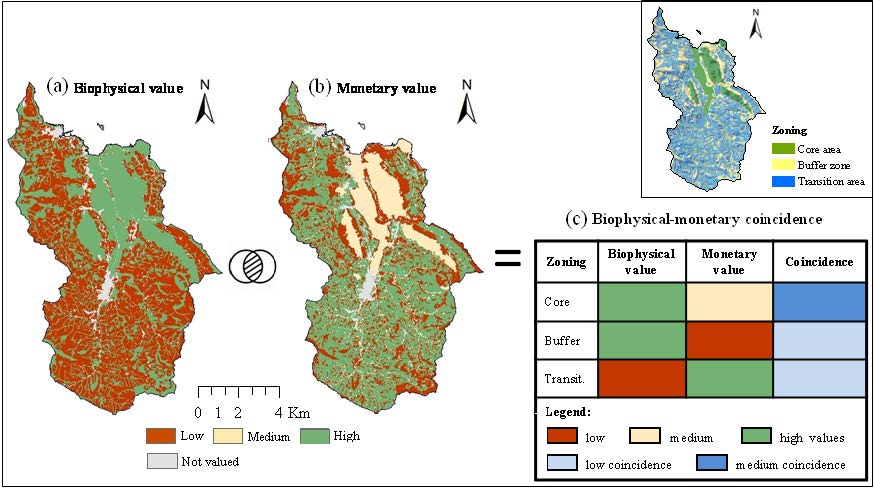Nekane Castillo-Eguskitza, María F. Schmitz, Miren Onaindia, Alejandro J. Rescia
Linking Biophysical and Economic Assessments of Ecosystem Services for a Social–Ecological Approach to Conservation Planning: Application in a Biosphere Reserve (Biscay, Spain)
Sustainability 2019, 11, 3092
DOI: 10.3390/su11113092
RESUMEN
The search for a balance between nature conservation and sustainable development remains a scientific and spatial planning challenge. In social-ecological systems based on traditional rural activities and associated with protected areas, this balance is particularly complex. Quantifying the economic impact of land use changes on ecosystem services can be useful to advise policy makers and improving social-ecological sustainability. In this study, we evaluated the land use changes in a time series and estimated the monetary value of the ecosystem services of the Urdaibai Biosphere Reserve (Biscay, Spain). In addition, we linked the monetary and biophysical values of land uses in each zoning units of the reserve, in order to identify the spatial adjustment between both assessments. Results showed that land use changes have clearly homogenized the landscape without substantially affecting its economic value. The methodological approach allowed detection that the reserve zoning was performed based more on its biophysical values than on economic ones. Thus, evident divergences between the biophysical and economic assessments were found. The core area was the one that had the highest coincidences (medium values) between both ecosystem services assessments, which highlights its importance not only in biophysical terms, is also economical. The procedure followed proved to be a useful tool to social-ecological planning and design of specific conservation strategies for the sustainable development of the area.
